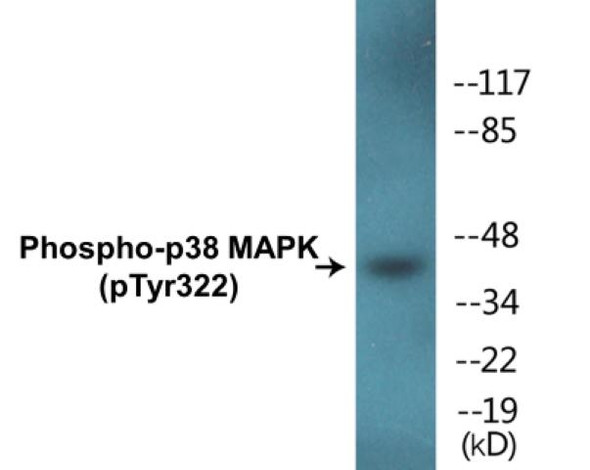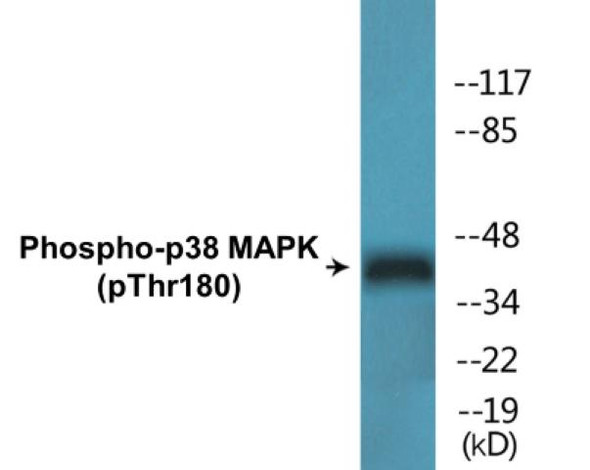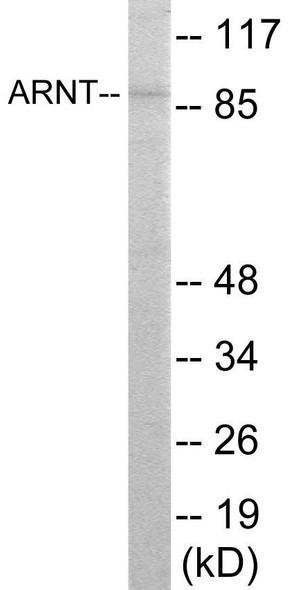Description
p42 MAPK Colorimetric Cell-Based ELISA
The p42 MAPK Colorimetric Cell-Based ELISA Kit is a cutting-edge tool designed for the accurate measurement of p42 MAPK levels in cell lysates and tissue homogenates. This kit offers high sensitivity and specificity, allowing for precise and reproducible results that are essential for a wide range of research applications.p42 MAPK, also known as ERK2, plays a crucial role in cell proliferation, differentiation, and survival. Dysregulation of p42 MAPK signaling has been implicated in various diseases, including cancer, inflammatory disorders, and neurodegenerative conditions.
Therefore, monitoring p42 MAPK levels can provide valuable insights into disease mechanisms and potential therapeutic targets.With its advanced technology and reliable performance, the p42 MAPK Colorimetric Cell-Based ELISA Kit is a valuable tool for researchers studying signal transduction pathways, drug development, and disease biology. Trust in this kit to deliver accurate and meaningful results for your research needs.
| Product Name: | p42 MAPK Colorimetric Cell-Based ELISA |
| Product Code: | CBCAB00995 |
| ELISA Type: | Cell-Based |
| Target: | p42 MAPK |
| Reactivity: | Human, Mouse, Rat |
| Dynamic Range: | > 5000 Cells |
| Detection Method: | Colorimetric 450 nmStorage/Stability:4°C/6 Months |
| Format: | 96-Well Microplate |
The p42 MAPK Colorimetric Cell-Based ELISA Kit is a convenient, lysate-free, high throughput and sensitive assay kit that can detect p42 MAPK protein expression profile in cells. The kit can be used for measuring the relative amounts of p42 MAPK in cultured cells as well as screening for the effects that various treatments, inhibitors (ie siRNA or chemicals), or activators have on p42 MAPK.
Qualitative determination of p42 MAPK concentration is achieved by an indirect ELISA format. In essence, p42 MAPK is captured by p42 MAPK-specific primary antibodies while the HRP-conjugated secondary antibodies bind the Fc region of the primary antibody. Through this binding, the HRP enzyme conjugated to the secondary antibody can catalyze a colorimetric reaction upon substrate addition. Due to the qualitative nature of the Cell-Based ELISA, multiple normalization methods are needed:
| 1. | A monoclonal antibody specific for human GAPDH is included to serve as an internal positive control in normalizing the target absorbance values. |
| 2. | Following the colorimetric measurement of HRP activity via substrate addition, the Crystal Violet whole-cell staining method may be used to determine cell density. After staining, the results can be analysed by normalizing the absorbance values to cell amounts, by which the plating difference can be adjusted. |
| Database Information: | Gene ID: 5594, UniProt ID: P28482, OMIM: 176948, Unigene: Hs.431850 |
| Gene Symbol: | MAPK1 |
| Sub Type: | None |
| UniProt Protein Function: | ERK2: a serine/threonine kinase of the GMGC group that plays a critical role in the regulation of cell growth and differentiation. ERK1 (MAPK3) and ERK2 (MAPK1) play central roles in MAPK cascades and are activated by a wide variety of extracellular signals including growth and neurotrophic factors, cytokines, hormones and neurotransmitters. Depending on the cellular context, MAPK cascades mediate diverse biological functions such as cell growth, adhesion, survival and differentiation through the regulation of transcription, translation, cytoskeletal rearrangements. MAPK cascades also plays a role in initiation and regulation of meiosis, mitosis, and postmitotic functions in differentiated cells by phosphorylating a number of transcription factors. Activation of MAP kinases occurs through phosphorylation of threonine and tyrosine residues at the sequence T*EY* by upstream MAP kinase kinases, MEK1 and -2. Phosphorylation of both the threonine and tyrosine are required for activity. This phosphorylation causes dramatic conformational changes, which enable full activation and interaction of MAPK1/ERK2 with its substrates. |
| UniProt Protein Details: | Protein type:Protein kinase, CMGC; Kinase, protein; EC 2.7.11.24; Protein kinase, Ser/Thr (non-receptor); CMGC group; MAPK family; MAPK/ERK subfamily; ERK subfamily Chromosomal Location of Human Ortholog: 22q11.21 Cellular Component: axon; caveola; cytoplasm; cytoskeleton; cytosol; dendrite cytoplasm; early endosome; focal adhesion; Golgi apparatus; late endosome; microtubule cytoskeleton; microtubule organizing center; mitochondrion; nucleoplasm; nucleus; perikaryon; protein complex; pseudopodium Molecular Function:ATP binding; DNA binding; MAP kinase activity; mitogen-activated protein kinase kinase kinase binding; phosphatase binding; phosphotyrosine binding; protein binding; protein serine/threonine kinase activity; RNA polymerase subunit kinase activity; transcription factor binding Biological Process: activation of MAPK activity; activation of MAPKK activity; apoptosis; axon guidance; B cell receptor signaling pathway; Bergmann glial cell differentiation; blood coagulation; cell cycle; chemotaxis; cytosine metabolic process; epidermal growth factor receptor signaling pathway; fibroblast growth factor receptor signaling pathway; innate immune response; insulin receptor signaling pathway; lipopolysaccharide-mediated signaling pathway; mammary gland epithelial cell proliferation; MAPKKK cascade; MyD88-dependent toll-like receptor signaling pathway; MyD88-independent toll-like receptor signaling pathway; negative regulation of cell differentiation; nerve growth factor receptor signaling pathway; nuclear translocation of MAPK; outer ear morphogenesis; peptidyl-serine phosphorylation; peptidyl-threonine phosphorylation; platelet activation; positive regulation of cell migration; positive regulation of cell proliferation; positive regulation of telomerase activity; positive regulation of telomere maintenance via telomerase; positive regulation of transcription, DNA-dependent; positive regulation of translation; protein amino acid phosphorylation; Ras protein signal transduction; regulation of cytoskeleton organization and biogenesis; regulation of protein stability; regulation of stress-activated MAPK cascade; regulation of transcription factor activity; response to DNA damage stimulus; response to estrogen stimulus; response to exogenous dsRNA; response to stress; response to toxin; sensory perception of pain; signal transduction; small GTPase mediated signal transduction; stress-activated MAPK cascade; synaptic transmission; T cell receptor signaling pathway; thymus development; thyroid gland development; toll-like receptor 10 signaling pathway; toll-like receptor 2 signaling pathway; toll-like receptor 3 signaling pathway; toll-like receptor 4 signaling pathway; toll-like receptor 5 signaling pathway; toll-like receptor 9 signaling pathway; toll-like receptor signaling pathway; transcription, DNA-dependent; vascular endothelial growth factor receptor signaling pathway; viral reproduction |
| NCBI Summary: | This gene encodes a member of the MAP kinase family. MAP kinases, also known as extracellular signal-regulated kinases (ERKs), act as an integration point for multiple biochemical signals, and are involved in a wide variety of cellular processes such as proliferation, differentiation, transcription regulation and development. The activation of this kinase requires its phosphorylation by upstream kinases. Upon activation, this kinase translocates to the nucleus of the stimulated cells, where it phosphorylates nuclear targets. One study also suggests that this protein acts as a transcriptional repressor independent of its kinase activity. The encoded protein has been identified as a moonlighting protein based on its ability to perform mechanistically distinct functions. Two alternatively spliced transcript variants encoding the same protein, but differing in the UTRs, have been reported for this gene. [provided by RefSeq, Jan 2014] |
| UniProt Code: | P28482 |
| NCBI GenInfo Identifier: | 119554 |
| NCBI Gene ID: | 5594 |
| NCBI Accession: | P28482.3 |
| UniProt Secondary Accession: | P28482,A8CZ64, |
| UniProt Related Accession: | P28482 |
| Molecular Weight: | |
| NCBI Full Name: | Mitogen-activated protein kinase 1 |
| NCBI Synonym Full Names: | mitogen-activated protein kinase 1 |
| NCBI Official Symbol: | MAPK1 |
| NCBI Official Synonym Symbols: | ERK; p38; p40; p41; ERK2; ERT1; ERK-2; MAPK2; PRKM1; PRKM2; P42MAPK; p41mapk; p42-MAPK |
| NCBI Protein Information: | mitogen-activated protein kinase 1 |
| UniProt Protein Name: | Mitogen-activated protein kinase 1 |
| UniProt Synonym Protein Names: | ERT1; Extracellular signal-regulated kinase 2; ERK-2; MAP kinase isoform p42; p42-MAPK; Mitogen-activated protein kinase 2; MAP kinase 2; MAPK 2 |
| UniProt Gene Name: | MAPK1 |
| UniProt Entry Name: | MK01_HUMAN |
| Component | Quantity |
| 96-Well Cell Culture Clear-Bottom Microplate | 2 plates |
| 10X TBS | 24 mL |
| Quenching Buffer | 24 mL |
| Blocking Buffer | 50 mL |
| 15X Wash Buffer | 50 mL |
| Primary Antibody Diluent | 12 mL |
| 100x Anti-Phospho Target Antibody | 60 µL |
| 100x Anti-Target Antibody | 60 µL |
| Anti-GAPDH Antibody | 60 µL |
| HRP-Conjugated Anti-Rabbit IgG Antibody | 12 mL |
| HRP-Conjugated Anti-Mouse IgG Antibody | 12 mL |
| SDS Solution | 12 mL |
| Stop Solution | 24 mL |
| Ready-to-Use Substrate | 12 mL |
| Crystal Violet Solution | 12 mL |
| Adhesive Plate Seals | 2 seals |
The following materials and/or equipment are NOT provided in this kit but are necessary to successfully conduct the experiment:
- Microplate reader able to measure absorbance at 450 nm and/or 595 nm for Crystal Violet Cell Staining (Optional)
- Micropipettes with capability of measuring volumes ranging from 1 µL to 1 ml
- 37% formaldehyde (Sigma Cat# F-8775) or formaldehyde from other sources
- Squirt bottle, manifold dispenser, multichannel pipette reservoir or automated microplate washer
- Graph paper or computer software capable of generating or displaying logarithmic functions
- Absorbent papers or vacuum aspirator
- Test tubes or microfuge tubes capable of storing ≥1 ml
- Poly-L-Lysine (Sigma Cat# P4832 for suspension cells)
- Orbital shaker (optional)
- Deionized or sterile water
*Note: Protocols are specific to each batch/lot. For the correct instructions please follow the protocol included in your kit.
| Step | Procedure |
| 1. | Seed 200 µL of 20,000 adherent cells in culture medium in each well of a 96-well plate. The plates included in the kit are sterile and treated for cell culture. For suspension cells and loosely attached cells, coat the plates with 100 µL of 10 µg/ml Poly-L-Lysine (not included) to each well of a 96-well plate for 30 minutes at 37°C prior to adding cells. |
| 2. | Incubate the cells for overnight at 37°C, 5% CO2. |
| 3. | Treat the cells as desired. |
| 4. | Remove the cell culture medium and rinse with 200 µL of 1x TBS, twice. |
| 5. | Fix the cells by incubating with 100 µL of Fixing Solution for 20 minutes at room temperature. The 4% formaldehyde is used for adherent cells and 8% formaldehyde is used for suspension cells and loosely attached cells. |
| 6. | Remove the Fixing Solution and wash the plate 3 times with 200 µL 1x Wash Buffer for five minutes each time with gentle shaking on the orbital shaker. The plate can be stored at 4°C for a week. |
| 7. | Add 100 µL of Quenching Buffer and incubate for 20 minutes at room temperature. |
| 8. | Wash the plate 3 times with 1x Wash Buffer for 5 minutes each time. |
| 9. | Add 200 µL of Blocking Buffer and incubate for 1 hour at room temperature. |
| 10. | Wash 3 times with 200 µL of 1x Wash Buffer for 5 minutes each time. |
| 11. | Add 50 µL of 1x primary antibodies (Anti-p42 MAPK Antibody and/or Anti-GAPDH Antibody) to the corresponding wells, cover with Parafilm and incubate for 16 hours (overnight) at 4°C. If the target expression is known to be high, incubate for 2 hours at room temperature. |
| 12. | Wash 3 times with 200 µL of 1x Wash Buffer for 5 minutes each time. |
| 13. | Add 50 µL of 1x secondary antibodies (HRP-Conjugated AntiRabbit IgG Antibody or HRP-Conjugated Anti-Mouse IgG Antibody) to corresponding wells and incubate for 1.5 hours at room temperature. |
| 14. | Wash 3 times with 200 µL of 1x Wash Buffer for 5 minutes each time. |
| 15. | Add 50 µL of Ready-to-Use Substrate to each well and incubate for 30 minutes at room temperature in the dark. |
| 16. | Add 50 µL of Stop Solution to each well and read OD at 450 nm immediately using the microplate reader. |
(Additional Crystal Violet staining may be performed if desired – details of this may be found in the kit technical manual.)






